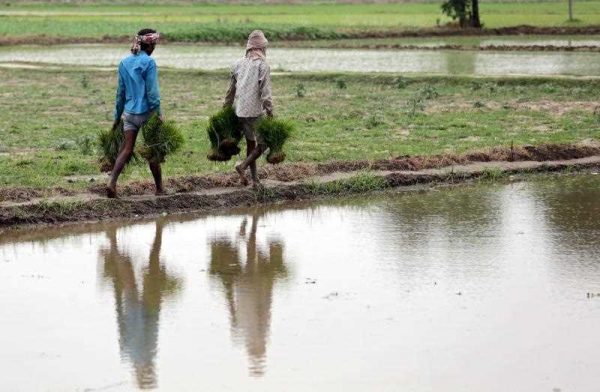There is good reason for the euphoria. India’s aspirational middle class is becoming impatient and have high expectations of the new government in New Delhi. China’s growth is slowing down as it rebalances its economy away from investment and exports and toward domestic demand. In February 2015, India’s Central Statistical Organisation revised its GDP statistics, resulting in predictions much rosier than almost every other near-term economic data. And according to the IMF’s April 2015 World Economic Outlook, India is projected to maintain a growth rate of over 7 per cent until 2016 — the highest rate amongst major economies.
But while China and India have indeed been the two fastest growing major economies since 2000, the underpinnings of their high growth rates are quite different.
China’s rapid growth was about reaping the productivity dividend from labour moving from low productivity agriculture into higher productivity manufacturing.
On the other hand, India’s high growth was about large additions to the labour force in low productivity small enterprises, including family-owned businesses. As a result, India’s labour productivity has been much lower than China’s — and the gap is widening. According to Conference Board data, in 2011 China had 8.8 per cent per capita GDP growth, while India’s was 5.8 per cent. By 2014, China’s per capita GDP growth had fallen to 6.7 per cent, but India’s per capita GDP growth rate plummeted to 2.7 per cent.
Why has this happened? There are four obvious reasons. Labour-intensive manufacturing in India continues to face daunting structural constraints. Large areas of India’s agricultural sector continue to rely on rainwater. And while employment guarantee schemes may have shifted income to labourers, this was not accompanied by a matching growth in productivity. But most importantly, growing infrastructural and governance bottlenecks have lowered both labour and capital productivity.
Being poor is all about low productivity and India is seeing the effects. China is a more unequal society measured by its Gini coefficient. But India has a far more modest record of poverty reduction. According to the World Bank database the rate of extreme poverty in China declined from 84 in 1981 to just 12 in 2010. The comparable decline in India during this period was from 60 to 33. More Indians are poor compared to Chinese, even though the latter is more populous. Among the major regions, only sub Saharan Africa has a worse track record in reduction of extreme poverty. Even the rest of South Asia has fared better. India now has the dubious distinction of being home to the single biggest mass of extremely poor in the world.
How is India addressing the problem of low productivity growth (and indirectly, its poverty problem)? The Make in India initiative seeks to expand the scale and contribution of modern manufacturing. The government has also set up two high level task forces on poverty and agriculture. Combined with India’s putative competitive advantage in services, this integrated quartet has the potential to propel India into a sustainable high-growth trajectory based on productivity growth and poverty alleviation.
But policy-makers need to be mindful of the long shadow that can fall between ideas and reality. Similar initiatives in the past — such as Indira Gandhi’s Garibi Hatao poverty reduction scheme, sundry export and employment promotion schemes, or the Green Revolution — had rather modest outcomes relative to the scale of their ambitions. Will this time be different?
Past initiatives floundered because they focused too much on redistribution and inclusiveness, and (with the exception of the Green Revolution) too little on productivity growth. This balance needs to change. The government should focus on encouraging a large scale movement of labour from low productivity agriculture and petty production to high productivity manufacturing and services. For this, it will have to remove policy roadblocks — such as land, labour and easy exit — as they stand in the way of labour-intensive manufacturing. And agriculture itself needs to become more productive.
The government should also focus on opening up the market to international competition. Low productivity thrives in closed markets. A virtuous cycle of productivity growth is closely linked to open markets. Productivity growth in China was accompanied by its accession to the World Trade Organization and its reliance on international trade as the engine of growth. India, on the other hand, quixotically attempted to roll back the Industrial Revolution. It insulated petty production from market forces through a system of reservations, limiting market access and high tariff and non-tariff barriers.
It is competition that drives economic agents to move up the productivity chain. Competition drives firms and organisations to upgrade technologies, find scale economies, and use cost effective management practices. India needs a process of creative destruction.
Despite India’s great potential, if it is to acquire a global role relative to its economic, geographic and demographic size, its economic growth needs to be underpinned by major productivity shifts and open markets.
Alok Sheel is Additional Chief Secretary of Planning and Economic Affairs, Government of Kerala. These are his personal views. An earlier version of this article appeared in Mint, 13 May 2015.

